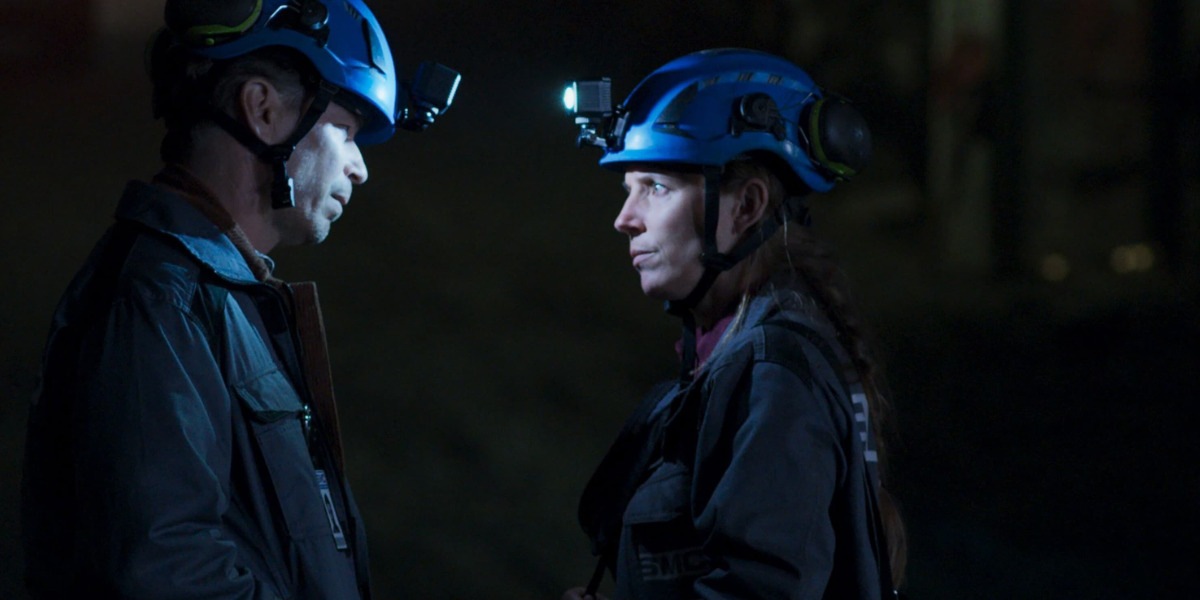In charting a story about Kiruna, a mining town’s struggle to survive a sudden and devastating seismic disaster, Netflix’s Swedish film, ‘The Abyss,’ presents a compelling narrative that seamlessly follows genre conventions. Figga, the security manager at the town’s infamous iron mine, helms the narrative as the protagonist with a parallel storyline revolving around her dysfunctional family’s search for their missing son, Simon, amidst the chaos. Consequently, the film maintains a thrilling perspective while also showcasing the danger and tragedy that disaster films are known for.
Therefore, the devastating depiction of the seismic disaster in the film must have compelled the viewers to wonder if the real-life citizens of Kiruna faced a similar incident, wherein an undetected cavity within the mine led to mass destruction. Likewise, the town’s unique location may also lead to curiosity about its current situation.
The Kiruna Mine’s Effect on the Town
Geologically, Faults are one of the most common structures in underground excavations, such as mining. In simple terms, a fault is a fracture in the Earth’s crust where displacement has occurred. As such, faults are often related to mining designs in significant ways with correlations to seismic activity within the area.

In the film, faults within the Kiruna mine, paired with a disturbance within a yet undetected cavity, carry the blame for the incoming rock burst that remains the story’s central disaster. Although this disaster, an earthquake, harvests inspiration from reality, the film depicts it through a fictionalized lens.
In real life, the earthquake that hit Sweden’s northern town, Kiruna, on May 18, 2020, was recorded devastatingly on the Richter scale, but not to the extent that’s shown within the film. In ‘The Abyss,’ the seismic activity under Kiruna all but sinks a significant portion of the town center into the ground. As such, the sizeable faults and one massive cavity found within the Kiruna mine remain crucial details to explain the film’s inciting events.
Inversely, reality charted a different path. In real life, the May 2020 earthquake never unfolded to such cinematic measures. In fact, unlike the film’s mine, the real-life Kiruna mine safely evacuated the 13 underground workers, returning them to surface level without any loss of life. Furthermore, LAKB (Luossavaara-Kiirunavaara Aktiebolag), the company in charge of the Kiruna mine, clarified through Press Manager Anders Lindberg that no similar cavity exists inside the actual mine.
Therefore, while faulting remains an issue in the real Kiruna mine, the film exaggerates its magnitude. In real life, the threat of the city center sinking underground remains— but only due to the mine’s expansion plans to go deeper underground. For the same reason, plans have been drafted and put in motion regarding the city’s relocation to ensure the mine can continue to grow without putting citizens in danger.
Do People Still Live in Kiruna?
Kiruna’s close proximity to LAKB’s iron mine and the latter’s expansion plans puts the city center in a danger zone. Nevertheless, the citizens aren’t necessarily evacuating and abandoning the town. Instead, in 2004, the city revealed its future plans, prioritizing relocation. “Imagine it like a walking millipede of a city,” said Krister Lindstedt, who works in the architecture firm responsible for the city’s big move.

The cracks appearing in the city during the early 2000s called for concern, suggesting possible collapse within the city without any action. Thus, by moving the city three kilometers eastward, the town will escape the danger zone while still retaining its identity. While some buildings and significant infrastructures, such as the Kiruna Church, will be moved in their entirety, the municipality also has plans for urban development for housing and some public establishments like schools.
According to The Guardian, the move is expected to last until 2033. Thus, while Kiruna’s geography is shifting a little, the town remains standing and still houses plenty of citizens and northern lights-driven tourism.
Read More: The Abyss Ending, Explained

